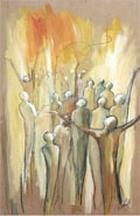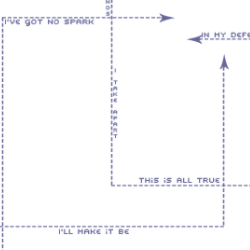|
|
Culture Shaping: Preparing for the future
 The literature makes it very evident that there is a huge discrepancy between the ideal nursing culture described in various nursing theories and research studies, and taught in most Western based nursing education programs and the manifest culture experienced in the day-to-day world of nursing practice. Major organizational and nursing culture change is necessary if this gap is ever going to become manageable, let alone bridged. Evidence appears to support the notion that phenomenological nursing is the most conducive way to engage with clients, and enact genuinely open, supportive nursing care (Heidegger, 2002). “Hermeneutic phenomenology works in nursing since nurses see whole persons who create personal meanings, a consideration of contextually meaningful experiences, a seeking to understand daily living and practical concerns, and the consideration of nurses and patients as entities or beings of Being” (Annels, 1996, p. 709). The literature makes it very evident that there is a huge discrepancy between the ideal nursing culture described in various nursing theories and research studies, and taught in most Western based nursing education programs and the manifest culture experienced in the day-to-day world of nursing practice. Major organizational and nursing culture change is necessary if this gap is ever going to become manageable, let alone bridged. Evidence appears to support the notion that phenomenological nursing is the most conducive way to engage with clients, and enact genuinely open, supportive nursing care (Heidegger, 2002). “Hermeneutic phenomenology works in nursing since nurses see whole persons who create personal meanings, a consideration of contextually meaningful experiences, a seeking to understand daily living and practical concerns, and the consideration of nurses and patients as entities or beings of Being” (Annels, 1996, p. 709).
Notions of Boundaries
 In order to succeed, nurses need to examine the boundaries that divide the ideal from the manifest in nursing culture. Abbott (1995a) described professions as living in an ecology that exhibits boundaries and divisions. “Boundaries are the zones of action because they are the zones of conflict” (p. 857). He presented a notion of professions as fields that were situated with secure heartlands deep behind boundary territories with “...social and cultural mapping of jurisdiction between professions and their turfs” (p. 857). It takes experience, energy, time, commitment and workable ideas to dissolve these old patterns and boundaries (Lowenstein, 2003). Boundaries that separate nurses as caregivers and clients as “patients” also need to be dissolved, with an emphasis on the dyadic nature of the nurse-client partnership (Richardson, 2004). In order to succeed, nurses need to examine the boundaries that divide the ideal from the manifest in nursing culture. Abbott (1995a) described professions as living in an ecology that exhibits boundaries and divisions. “Boundaries are the zones of action because they are the zones of conflict” (p. 857). He presented a notion of professions as fields that were situated with secure heartlands deep behind boundary territories with “...social and cultural mapping of jurisdiction between professions and their turfs” (p. 857). It takes experience, energy, time, commitment and workable ideas to dissolve these old patterns and boundaries (Lowenstein, 2003). Boundaries that separate nurses as caregivers and clients as “patients” also need to be dissolved, with an emphasis on the dyadic nature of the nurse-client partnership (Richardson, 2004).
Intentionality can help to reduce these boundaries, since it focuses on the natural way that people experience the world around them (Asp & Fagerberg, 2005). “Consciousness is directed partly toward objects in the world and partly towards the subject, in the form of self-reflection” (p. 4). It implies that there is a mutual influence between day-to-day occurrences in the life-world of both nurses and clients. As well, the notion of circularity between the lived body and the life-world means “that individuals can not be isolated from the contexts of meaning in which they live, because they have access to the world within and through their bodies” (p. 4). Language, meaning, and experience also interact in circularity: a fact that is very important to consider if nurses are to truly understand how clients perceive their experiences while receiving nursing care.
Culture Embodied
 The ideas of lived body, lifeworld, intentionality, and circularity are underpinnings for Merleau-Ponty's (1962) philosophy of language and have relevance to the exploration of nursing and client culture. Nurses need to ponder on their use of language in their practice, since it has phenomenological, semiological, and pragmatic dimensions that influence their relations with their clients within the organizational context. Since nurses as well as clients are embodied souls who find themselves together within the context of health care, nurses need to develop an awareness of this embodiment and apply it to their caring practice. “Nurses can experience themselves as embodied souls engaged in mutual creative processes with those cared for and appreciate the need to honor and care for self as well as other” (Fox, 1979, p. 132). “The focus is the soulfulness of engagement as communion, at whatever level of care the person needs, be it a wound-dressing change for a person in coma or a dialogue about the loss of a child. With this orientation to practice, education, and research, nurses can honor the reverence of each unique human life in a new way, opening up to the creative potential inherent in all activity. This is an essential aspect of compassion and care for embodied souls” (Picard, 1997, p. 4). The ideas of lived body, lifeworld, intentionality, and circularity are underpinnings for Merleau-Ponty's (1962) philosophy of language and have relevance to the exploration of nursing and client culture. Nurses need to ponder on their use of language in their practice, since it has phenomenological, semiological, and pragmatic dimensions that influence their relations with their clients within the organizational context. Since nurses as well as clients are embodied souls who find themselves together within the context of health care, nurses need to develop an awareness of this embodiment and apply it to their caring practice. “Nurses can experience themselves as embodied souls engaged in mutual creative processes with those cared for and appreciate the need to honor and care for self as well as other” (Fox, 1979, p. 132). “The focus is the soulfulness of engagement as communion, at whatever level of care the person needs, be it a wound-dressing change for a person in coma or a dialogue about the loss of a child. With this orientation to practice, education, and research, nurses can honor the reverence of each unique human life in a new way, opening up to the creative potential inherent in all activity. This is an essential aspect of compassion and care for embodied souls” (Picard, 1997, p. 4).
 Nurses can also forge deep, narrative knowledge that can help them to respond to their clients' unique needs by listening to the stories shared by clients in the context of nursing practice. “The persistent concern with the dehumanization of modern health care is, in large part, a response to the loss of the wholeness of patients and to the denigration, as unscientific, of their 'stories of sickness', adversity, and triumph. There is something profound about the struggle to recapture the patient in the story and the story in the case history. In recent years, nurses have come to (re)value narrative knowing. They have described narratives as means to discover knowledge, to uncover the knowledge embedded in practice, and to recover the art of nursing” (Sandelowski, 1994, p. 23). Nurses can also forge deep, narrative knowledge that can help them to respond to their clients' unique needs by listening to the stories shared by clients in the context of nursing practice. “The persistent concern with the dehumanization of modern health care is, in large part, a response to the loss of the wholeness of patients and to the denigration, as unscientific, of their 'stories of sickness', adversity, and triumph. There is something profound about the struggle to recapture the patient in the story and the story in the case history. In recent years, nurses have come to (re)value narrative knowing. They have described narratives as means to discover knowledge, to uncover the knowledge embedded in practice, and to recover the art of nursing” (Sandelowski, 1994, p. 23).
Concluding Thoughts
 If nurses value the meaning, embodiment, subjectivity, dialogue, and life-world of each client; and work together to influence organizational structure to petition more time and space to dwell with their clients in a meaningful way, nursing culture would move closer to its ideal form within the health care context. This would also help to extinguish the horizontal violence still prevalent in nursing practice, since respect and compassion for self and others could develop within the layers of culture that nurses practice within. As well, the discipline and profession of nursing would be promoted and better recognized as unique and meaningful to the system of health care and society at large. It is time to begin to build this awareness, this intentionality and mindfulness, and to shape nursing culture to become what it aspires to be. To clearly embody the rhetoric and make it a reality is not an easy task. Paradigm shifts never are. If nurses value the meaning, embodiment, subjectivity, dialogue, and life-world of each client; and work together to influence organizational structure to petition more time and space to dwell with their clients in a meaningful way, nursing culture would move closer to its ideal form within the health care context. This would also help to extinguish the horizontal violence still prevalent in nursing practice, since respect and compassion for self and others could develop within the layers of culture that nurses practice within. As well, the discipline and profession of nursing would be promoted and better recognized as unique and meaningful to the system of health care and society at large. It is time to begin to build this awareness, this intentionality and mindfulness, and to shape nursing culture to become what it aspires to be. To clearly embody the rhetoric and make it a reality is not an easy task. Paradigm shifts never are.
|
|
|
|

|



 The literature makes it very evident that there is a huge discrepancy between the ideal nursing culture described in various nursing theories and research studies, and taught in most Western based nursing education programs and the manifest culture experienced in the day-to-day world of nursing practice. Major organizational and nursing culture change is necessary if this gap is ever going to become manageable, let alone bridged. Evidence appears to support the notion that phenomenological nursing is the most conducive way to engage with clients, and enact genuinely open, supportive nursing care (Heidegger, 2002). “Hermeneutic phenomenology works in nursing since nurses see whole persons who create personal meanings, a consideration of contextually meaningful experiences, a seeking to understand daily living and practical concerns, and the consideration of nurses and patients as entities or beings of Being” (Annels, 1996, p. 709).
The literature makes it very evident that there is a huge discrepancy between the ideal nursing culture described in various nursing theories and research studies, and taught in most Western based nursing education programs and the manifest culture experienced in the day-to-day world of nursing practice. Major organizational and nursing culture change is necessary if this gap is ever going to become manageable, let alone bridged. Evidence appears to support the notion that phenomenological nursing is the most conducive way to engage with clients, and enact genuinely open, supportive nursing care (Heidegger, 2002). “Hermeneutic phenomenology works in nursing since nurses see whole persons who create personal meanings, a consideration of contextually meaningful experiences, a seeking to understand daily living and practical concerns, and the consideration of nurses and patients as entities or beings of Being” (Annels, 1996, p. 709).  In order to succeed, nurses need to examine the boundaries that divide the ideal from the manifest in nursing culture. Abbott (1995a) described professions as living in an ecology that exhibits boundaries and divisions. “Boundaries are the zones of action because they are the zones of conflict” (p. 857). He presented a notion of professions as fields that were situated with secure heartlands deep behind boundary territories with “...social and cultural mapping of jurisdiction between professions and their turfs” (p. 857). It takes experience, energy, time, commitment and workable ideas to dissolve these old patterns and boundaries (Lowenstein, 2003). Boundaries that separate nurses as caregivers and clients as “patients” also need to be dissolved, with an emphasis on the dyadic nature of the nurse-client partnership (Richardson, 2004).
In order to succeed, nurses need to examine the boundaries that divide the ideal from the manifest in nursing culture. Abbott (1995a) described professions as living in an ecology that exhibits boundaries and divisions. “Boundaries are the zones of action because they are the zones of conflict” (p. 857). He presented a notion of professions as fields that were situated with secure heartlands deep behind boundary territories with “...social and cultural mapping of jurisdiction between professions and their turfs” (p. 857). It takes experience, energy, time, commitment and workable ideas to dissolve these old patterns and boundaries (Lowenstein, 2003). Boundaries that separate nurses as caregivers and clients as “patients” also need to be dissolved, with an emphasis on the dyadic nature of the nurse-client partnership (Richardson, 2004).  The ideas of lived body, lifeworld, intentionality, and circularity are underpinnings for Merleau-Ponty's (1962) philosophy of language and have relevance to the exploration of nursing and client culture. Nurses need to ponder on their use of language in their practice, since it has phenomenological, semiological, and pragmatic dimensions that influence their relations with their clients within the organizational context. Since nurses as well as clients are embodied souls who find themselves together within the context of health care, nurses need to develop an awareness of this embodiment and apply it to their caring practice. “Nurses can experience themselves as embodied souls engaged in mutual creative processes with those cared for and appreciate the need to honor and care for self as well as other” (Fox, 1979, p. 132). “The focus is the soulfulness of engagement as communion, at whatever level of care the person needs, be it a wound-dressing change for a person in coma or a dialogue about the loss of a child. With this orientation to practice, education, and research, nurses can honor the reverence of each unique human life in a new way, opening up to the creative potential inherent in all activity. This is an essential aspect of compassion and care for embodied souls” (Picard, 1997, p. 4).
The ideas of lived body, lifeworld, intentionality, and circularity are underpinnings for Merleau-Ponty's (1962) philosophy of language and have relevance to the exploration of nursing and client culture. Nurses need to ponder on their use of language in their practice, since it has phenomenological, semiological, and pragmatic dimensions that influence their relations with their clients within the organizational context. Since nurses as well as clients are embodied souls who find themselves together within the context of health care, nurses need to develop an awareness of this embodiment and apply it to their caring practice. “Nurses can experience themselves as embodied souls engaged in mutual creative processes with those cared for and appreciate the need to honor and care for self as well as other” (Fox, 1979, p. 132). “The focus is the soulfulness of engagement as communion, at whatever level of care the person needs, be it a wound-dressing change for a person in coma or a dialogue about the loss of a child. With this orientation to practice, education, and research, nurses can honor the reverence of each unique human life in a new way, opening up to the creative potential inherent in all activity. This is an essential aspect of compassion and care for embodied souls” (Picard, 1997, p. 4). Nurses can also forge deep, narrative knowledge that can help them to respond to their clients' unique needs by listening to the stories shared by clients in the context of nursing practice. “The persistent concern with the dehumanization of modern health care is, in large part, a response to the loss of the wholeness of patients and to the denigration, as unscientific, of their 'stories of sickness', adversity, and triumph. There is something profound about the struggle to recapture the patient in the story and the story in the case history. In recent years, nurses have come to (re)value narrative knowing. They have described narratives as means to discover knowledge, to uncover the knowledge embedded in practice, and to recover the art of nursing” (Sandelowski, 1994, p. 23).
Nurses can also forge deep, narrative knowledge that can help them to respond to their clients' unique needs by listening to the stories shared by clients in the context of nursing practice. “The persistent concern with the dehumanization of modern health care is, in large part, a response to the loss of the wholeness of patients and to the denigration, as unscientific, of their 'stories of sickness', adversity, and triumph. There is something profound about the struggle to recapture the patient in the story and the story in the case history. In recent years, nurses have come to (re)value narrative knowing. They have described narratives as means to discover knowledge, to uncover the knowledge embedded in practice, and to recover the art of nursing” (Sandelowski, 1994, p. 23).  If nurses value the meaning, embodiment, subjectivity, dialogue, and life-world of each client; and work together to influence organizational structure to petition more time and space to dwell with their clients in a meaningful way, nursing culture would move closer to its ideal form within the health care context. This would also help to extinguish the horizontal violence still prevalent in nursing practice, since respect and compassion for self and others could develop within the layers of culture that nurses practice within. As well, the discipline and profession of nursing would be promoted and better recognized as unique and meaningful to the system of health care and society at large. It is time to begin to build this awareness, this intentionality and mindfulness, and to shape nursing culture to become what it aspires to be. To clearly embody the rhetoric and make it a reality is not an easy task. Paradigm shifts never are.
If nurses value the meaning, embodiment, subjectivity, dialogue, and life-world of each client; and work together to influence organizational structure to petition more time and space to dwell with their clients in a meaningful way, nursing culture would move closer to its ideal form within the health care context. This would also help to extinguish the horizontal violence still prevalent in nursing practice, since respect and compassion for self and others could develop within the layers of culture that nurses practice within. As well, the discipline and profession of nursing would be promoted and better recognized as unique and meaningful to the system of health care and society at large. It is time to begin to build this awareness, this intentionality and mindfulness, and to shape nursing culture to become what it aspires to be. To clearly embody the rhetoric and make it a reality is not an easy task. Paradigm shifts never are.